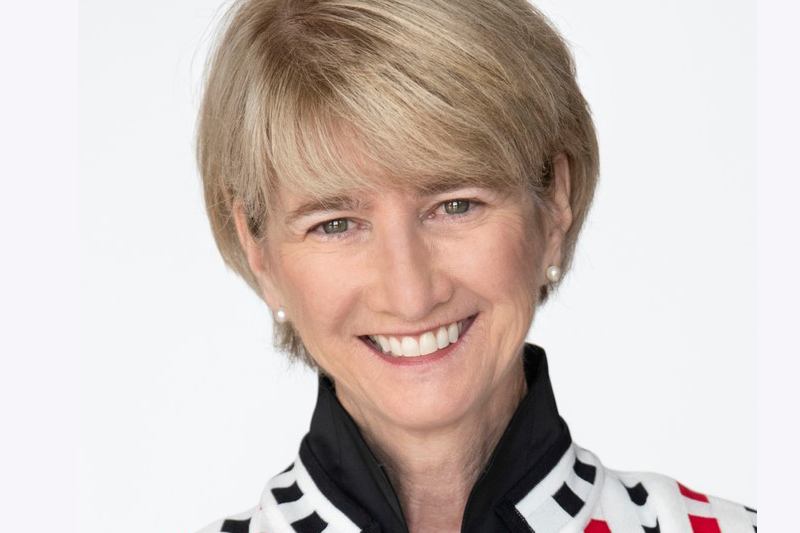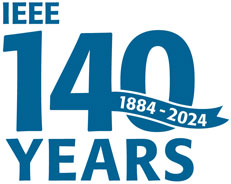
A new IEEE Medal will be presented for the first time in 2021 at the virtual IEEE Vision, Innovation, and Challenges Summit & Honors Ceremony—the IEEE Mildred Dresselhaus Medal. Kristina M. Johnson, President, The Ohio State University, will be the first recipient of this new medal.
A role model for women in engineering and a champion for increasing the participation of underserved populations in science and technology fields, Kristina M. Johnson, the recipient of the 2021 IEEE Mildred Dresselhaus Medal, is an internationally recognized leader in engineering, education, the private sector, government, and has even impacted the movie industry.
Johnson began her academic career at the University of Colorado, Boulder, where she spent 14 years as a professor as well as a founder and director of the U.S. National Science Foundation’s Engineering Research Center for Optoelectronic Computing Systems. She developed a new class of optoelectronic devices that modulate the intensity and phase of light. She also designed a new class of optoelectronic light engines that enabled high-quality, digital projection HDTV and helped advance 3D cinema applications. To commercialize these technologies, she co-founded and led ColorLink, LLC. ColorLink was later acquired by RealD, and hundreds of millions of people watching 3D movies use her inventions to see stunning 3D effects. The technology developed by Johnson and ColorLink was recognized by the National Inventors Hall of Fame and the John Fritz Medal (2008), which is among the most prestigious honors in engineering.
Johnson was the first woman to serve as dean of Duke University’s Pratt School of Engineering. There she established cross-disciplinary initiatives in photonics, bioengineering and biologically inspired materials, and energy and the environment. During her tenure, Pratt’s annual research expenditures tripled, the graduate programs doubled, the endowment grew by a factor of more than 10, and the Fitzpatrick Center for Interdisciplinary Engineering, Medicine and Applied Sciences was planned, funded, and constructed.
She broke another barrier when she became the first woman provost at Johns Hopkins University, with oversight of the academic operations and budget of nine schools that included interdisciplinary programs, academic centers, and institutes. She led a university-wide strategic planning process, “Framework for the Future,” which included the creation of the Mosaic Initiative to recruit outstanding under-represented faculty and the launch of the Discovery Grant Program for faculty-led initiatives.
Johnson has also made substantive contributions in government service. In 2009, she was appointed by President Obama as the Under Secretary of Energy for Energy and Environment in the United States Department of Energy. Under her leadership she directed a portfolio that included research, development, demonstration, and deployment projects involving the U.S. national laboratories, universities, state and local governments, and private industry in renewable energy, carbon capture and sequestration, nuclear power, energy efficiency, smart grid, and nuclear waste.
Using what she learned while with the Department of Energy, Johnson later founded Enduring Hydro, a company that rejuvenates old hydroelectric plants with modern technology. This became a joint venture with Cube Hydro Partners that now operates 19 clean-energy power plants to help fight climate change.
Johnson became Chancellor of the State University of New York in 2017, overseeing a collection of 64 college and university campuses that representing the United States’ largest comprehensive system of public higher education. Here she developed a vision comprising individualized education, innovation and entrepreneurship, and sustainability, and she incorporated industry partnerships to support the vision. An example of one her initiatives is PRODI-G (Promoting Recruitment, Opportunity, Diversity, Inclusion and Growth), which is designed to enable SUNY campuses to hire up to 1,000 early-to-mid-career professors over the next decade who continue to meet persistent barriers in achieving certain careers, including underrepresented populations and women in STEM disciplines.
Johnson became the 16the president of Ohio State University in September 2020.
She earned her bachelor’s, master’s, and doctorate degrees in electrical engineering at Stanford University, where she was a varsity athlete in field hockey and founded the club varsity lacrosse team. Johnson was an undergraduate researcher and then did her PhD research in optics and holography in the lab of IEEE Fellow Joseph W. Goodman, who received the 1987 IEEE James H. Mullilgan, Jr. Education Medal. Goodman and Lambertus Hesselink were Johnson’s thesis advisors, both of whom were instrumental to her success. She was named among the “40 Years of Title IX: 40 Women Who Have Made an Impact” by the Women’s Sports Foundation, ESPNW, and Women in Cable Telecommunications.
Johnson is the first recipient of the new IEEE Mildred Dresselhaus Medal, sponsored by Google LLC. She is receiving the award “for leadership and technical contributions spanning academia, government, and business.” The medal will be presented during the virtual IEEE Vision, Innovation, and Challenges Summit & Honors Ceremony, which will be held 11–13 May 2021. “Super excited to get the news of the Mildred Dresselhaus Award. It is an incredible honor, particularly to be the inaugural recipient. Phenomenal!” said Kristina Johnson, when she was notified that she was selected receive this award. “I was privileged to have met Dr. Dresselhaus—a legend, a powerful intellect, and an amazing role model.” The IEEE Mildred Dresselhaus Medal was established in 2019 by the IEEE Board of Directors and is named in honor of the late Institute Professor and Professor Emerita of physics and electrical engineering at the Massachusetts Institute of Technology, Mildred Dresselhaus, whose innovations helped mold the history of advancements in science, technology, and education around the world. Dr. Dresselhaus paved the way for the rise of nanotechnology and blazed a path for women in science and engineering. She was known as the “queen of carbon science” based on her life-long research into the properties of graphite and carbon-based materials. The era of carbon electronics can be traced back to her tireless research efforts.


